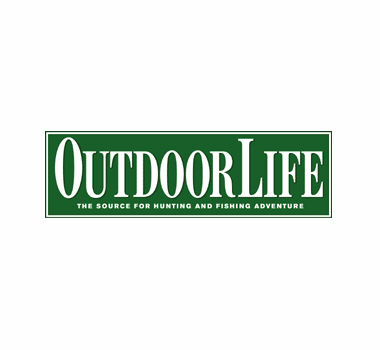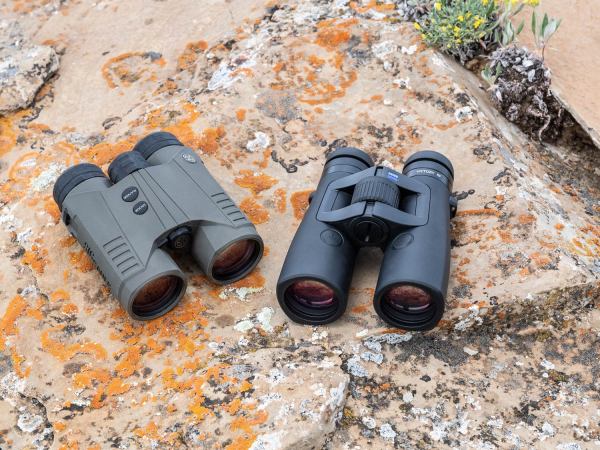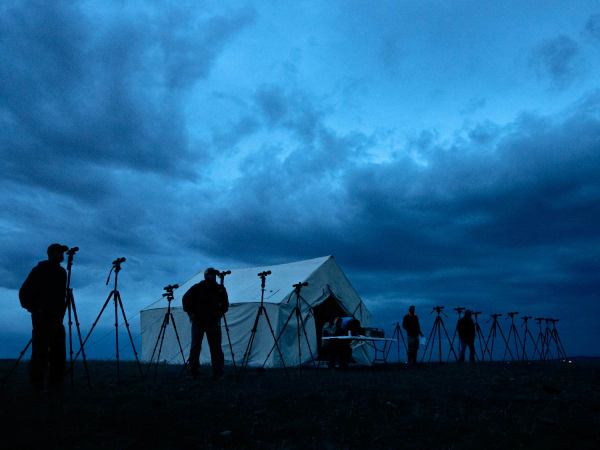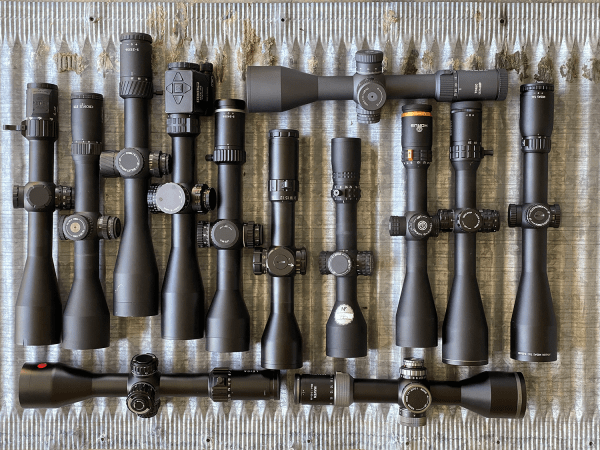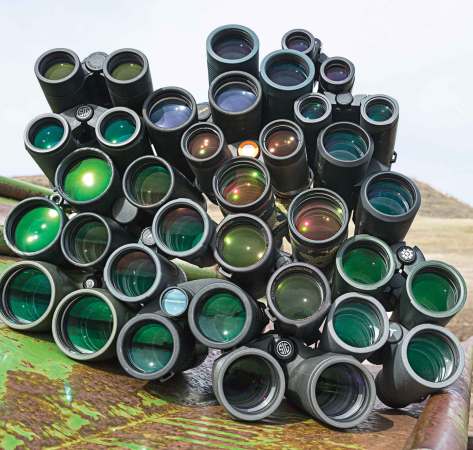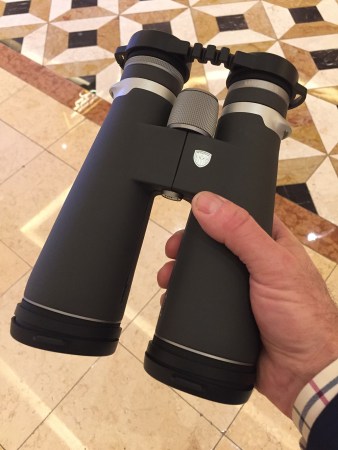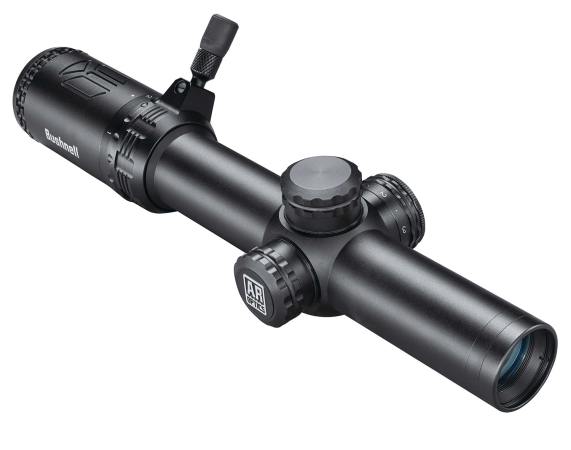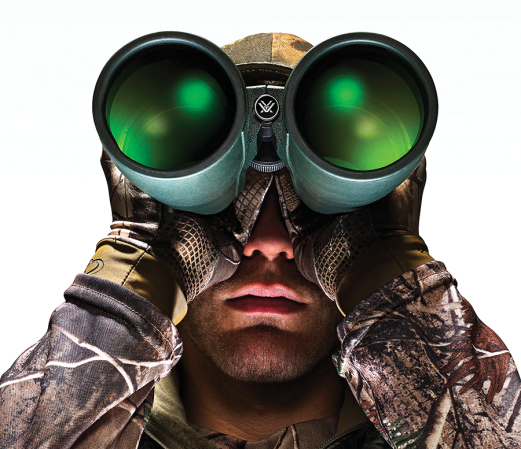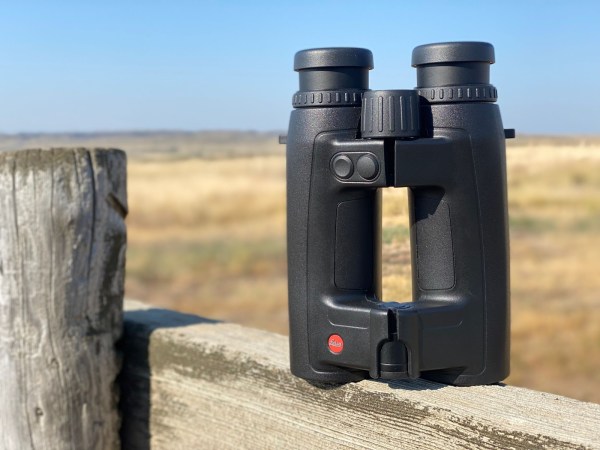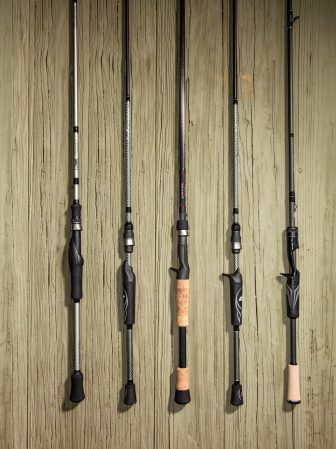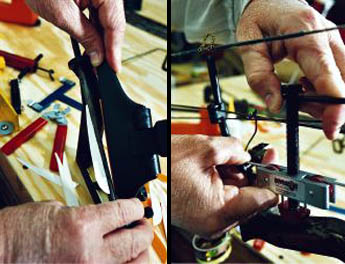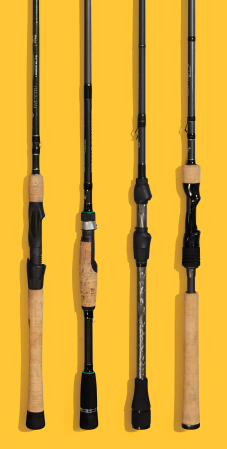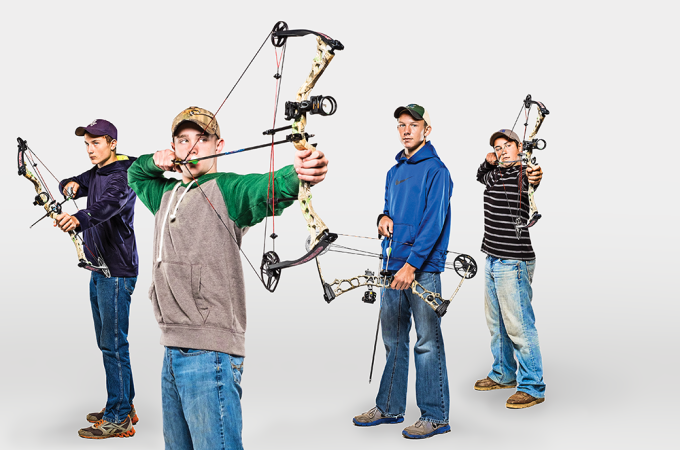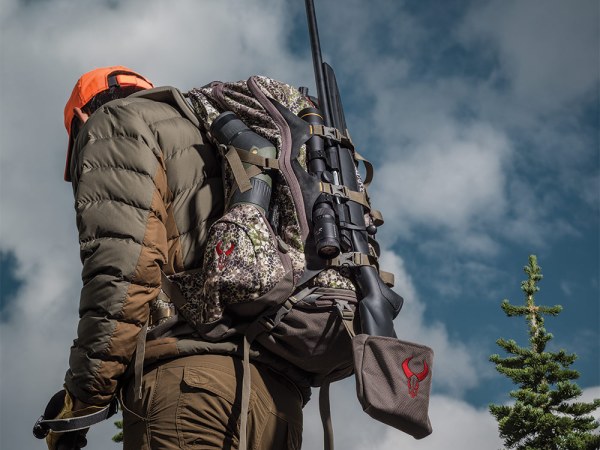We may earn revenue from the products available on this page and participate in affiliate programs. Learn More ›
Every year, as wesearch for the perfect location for our optics tests, we consider severalthings. First, the site needs to be outdoorsy, with habitat that ranges fromnatural woodlands to sweeping vistas. Next, there has to be plenty of glassablewildlife. And finally, the site must provide old-fashioned twilight, where dayslides into night without the visual interference of headlights or city lightpollution. We even try to limit lunar light by scheduling the tests during thedark of the moon.
For our 2006 test,we found that perfect location high in the Tehachapi Mountains on the TejonRanch, situated within easy driving distance of Los Angeles (661-248-3000;hunttejon.com). Not only was the setting spectacular and remote, but thewildlife there was so abundant that as one team member compared binoculars byidentifying acorn woodpeckers and dark-eyed juncos in nearby trees, anothertested spotting scopes by glassing mule deer, elk and wild boars onmountainsides two miles away. What more could you ask for?
Why We Test What We Test
Last fall at elkcamp I was asked by a faithful OUTDOOR LIFE reader–the kind who clips and savesthe optics gear test, God love him–why a certain manufacturer’s binocularsweren’t in the 2005 tests. The simple answer is that the tests are restrictedto either brand-new or significantly improved products, and the manufacturer inquestion hadn’t introduced any products that qualified.
We’re also oftenasked why we haven’t included certain new products that other magazines havewritten glowingly about months or even years earlier. Well, like overly excitedexpectant parents, some companies send out birth announcements (i.e., pressreleases) long before the hyped optics actually exist. Unfortunately, wehaven’t yet figured out how to field-test products that are little more than agleam in some optical engineer’s eyes.
On the DarkSide
Our most populartest, both with team members and readers, has always been low-light performance–no doubt because the ability to see game at dawn or dusk or in deep shadowoften means the difference between hunting success and failure. This test isconducted in late-evening light. A circular contrast target with alternatinginch-wide black and gray lines is placed 100 yards away in natural habitat. Tokeep our eyes honest, the target is rotated every few seconds, which changesthe orientation of the lines. The binoculars, spotting scopes and riflescopesare rated on how many minutes after sunset the orientation of the lines can beseen.
The results haveconsistently shown that low-light performance is determined by a combination offactors. The first is light transmission, defined as the usable (image-forming)light that makes it all the way through an optical system relative to theamount that enters–90 percent is very good. Second is the geometriclight-gathering power of the objective (front) lens, calculated as the squareof the objective’s diameter. And third is the instrument’s magnifying power,which plays a role because of the simple fact that larger-appearing objects areeasier to see in low light.
In accordance withthe above, our tests have shown: (1) When instruments with nearly identicalmagnification and objective sizes, such as 8×40 and 8×42, are tested side byside, the one with the most light transmission performs better; (2) wheninstruments with similar magnifications and light transmissions are tested, theone with the largest objective diameter performs better; and (3) wheninstruments with similar light transmissions and objective diameters aretested, the one with the highest magnification performs better. However, whenoptics with a mix of those characteristics are tested side by side, we’re neversure how things will turn out.
Full-SizeBinoculars
If you’re in themarket for a serious hunting binocular, this is the broad category from whichyou should choose. Though not all configurations were represented in thisyear’s selection of 15 models, full-size binoculars (defined as binoculars withobjective lenses of 30mm or larger) can vary in magnification anywhere from 6Xto about 16X, with objective diameters as large as 60mm. Prices, determined bymanufacturing costs and whatever the market will bear, can range from less than$100 to more than $2,000. Not surprisingly, the optical and mechanical qualityof such binoculars also varies greatly.
Our advice is thatno one should ever go hunting without a binocular, and that when you’re buyingone, you should get the best you can afford. Even the most lowborn binocular isa thousand times better than no binocular at all. Concerning this year’sbinocular lineup, nothing that rated less than “good” was included, andthough we each had favorites, we’d be happy to go hunting with any one ofthem.
Standouts: Apartfrom the Editor’s Choice and the Great Buy, several binoculars performed verywell. Among these was the Meopta 10×50, which had superb image quality andoutlasted the Leica 8×56 by a half minute in the low-light test–probablybecause of its higher magnification. Other standouts were Cabela’s Euro 10×42,Leupold’s Golden Ring 8×32, Steiner’s Peregrine 8.5×50, Weaver’s Grand Slam10x42 and the Zeiss Conquest 8×40.
Lens coatings: It’snoteworthy that all the fullsize binoculars tested had roof prisms, which isn’tto say that Porro-prism binoculars, with their dog-legged configurations,aren’t still excellent choices. The costly truth is that for roof-prismbinoculars to match the image quality and brightness of otherwise equalPorro-prism models, they must have special high-tech coatings on their prismsurfaces. Not to be confused with antireflection coatings, which reduce lightloss due to reflections on air-to-glass lens surfaces, these special prismcoatings include phase-correction (also called P-coatings) and high-reflectiondielectric coatings.
P-coatings: Withoutgetting too technical, Pcoatings are used on the roof surfaces of bothAbbe-Koenig and Schmidt Pechan roof prisms to correct image-degrading waveinterference that occurs when light waves, reflecting off the opposing roofsurfaces, combine to form images.
High-reflectiondielectric coatings: Sometimes referred to by proprietary names such asHighLux, Swarobright, etc., these replace metallic (aluminum or silver) mirrorson one specific surface of the widely used Schmidt Pechan prisms where between4 percent and 6 percent of the available light is lost to absorption whilebeing reflected. Such dielectric coatings reduce this light loss to as littleas 0.2 percent. Though initially limited to highend binoculars, the use of bothof these coatings is rapidly spreading to midlevel roof-prism binoculars.
CompactBinoculars
Though less thanideal for hunting purposes, compact binoculars (those having objective lensessmaller than 30mm) are currently used by an astounding number of hunters,evidently with satisfaction. Two probable reasons are price and portability:Compacts are much less expensive than their full-size counterparts, and beingsmall and lightweight, they are wonderfully convenient to carry in the field.Besides, who can deny that a compact binocular in the hand or vest pocket isn’tinfinitely better than a full-size binocular that has been left at home or in ahunting vehicle?
The primarycomplaint against compact binoculars is that their small objective lenses,ranging from about 20mm to 28mm in diameter, don’t gather enough light to befully effective on animals active in low-light times, such as deer, elk andbears. Interestingly, none of the compacts in this year’s low-light performancetest winked out until 30 minutes after sunset, which is the end of legalshooting time just about anywhere you might hunt.
This wasn’t abanner year in terms of the number of compacts tested. Perhaps there werealready so many on the market that manufacturers decided to turn their creativeenergies elsewhere. Or perhaps it was part of the natural ebb and flow thatoccurs in the optics world, a world in which it takes at least a couple ofyears to design and bring to market a noteworthy new product. Notwithstanding,we found things to get excited about in this year’s crop of new and improvedcompact binoculars.
Spotting Scopes
The spotting scopeis like the stepchild of the optics family–if someone has to stay home whilethe rest of the clan goes hunting, it’s the one. And even when it does get toride along, it’s often left sitting in a vehicle or at the bottom of someone’shunting pack. That’s because spotting scopes tend to be so big and heavythey’re impractical to carry in the field. Fortunately, that started changingin 2003, when Leupold introduced its pocket-size Golden Ring 10–20×40 compactspotting scope, which measures just 7.5 inches long and weighs a trivial 15.8ounces. The real surprise was that despite its small 40mm objective, the opticswere sharp enough to satisfy the long-range glassing needs of most hunters.
Now, fast-forwardto the 2006 optics test, where two wonderfully petite compacts with 50mmobjective lenses stole the spotlight from their bulkier brethren. These werethe 11-inch, 21.5-ounce Leupold Golden Ring 15–30×50 Compact and the 8.2-inch,19.8-ounce Nikon Fieldscope ED with interchangeable eyepieces.
But lest we get toocarried away with the virtues of pint-sized optics, the 17.5-inch, 50-ounceMeopta Meostar APO HS75 spotting scope, with its 75mm objective and 20–60Xeyepiece, outlasted all other optics, regardless of type, in the low-lightperformance tests by revealing target details until 54 minutes after sunset.Not surprisingly, the Meopta Meostar also had the best daylight resolution,resolving details as small as 1.5 seconds of angle. That’s equivalent to .026inches at 100 yards. Such outstanding image brightness and sharpness areattributable to its large apochromatic (APO) 75mm objective lens.”Apochromatic” signifies that image-degrading chromatic aberrations(color distortions) have been virtually eliminated.
Riflescopes
Of the three typesof sports optics–binoculars, spotting scopes and riflescopes–riflescopes are byfar the most complex. That’s because their two functions–as vision enhancersand ultraprecise aiming devices–must be harmoniously combined to make themfully compatible with the firearms on which they are mounted. Thoughriflescopes present more potential problems, the happy challenge for opticalengineers is that they also present more opportunities for innovativesolutions. That brings us to the 2006 crop of riflescopes, where creativesolutions to vexing problems, real or imagined, were the order of things. Therewere, in fact, so many innovations that the few riflescopes that had none wereuncharitably characterized by some of my fellow testers as plain Janes, whichis alright with a common Joe like me.
Of the variousinnovations, the low-mounting capability of Leupold’s VX-L was everybody’sfavorite. Here the engineer’s inventiveness is manifested in a crescent-shapedcutout on the bottom of the riflescope’s objective lens, which allows modelswith 50mm and 56mm objectives to be mounted as low as conventional scopes with36mm and 40mm objectives, respectively. By positioning the scope’s axis closerto the barrel, the large objective housing is much less obtrusive and theshooter’s eye can be more conveniently aligned. The result is a brighter imageand improved accuracy.
Having failed toget a fully functional Kahles with MultiZero bullet-drop compensation (BDC) in2005, we belatedly included a Kahles Helia CL 3–10×50 with MultiZero thisyear, and it got high ratings in every category–especially in low-lightperformance. It exceeded our expectations, first, by being easier to adjustthan we’d expected, and second, by repeatedly tracking between the various zerosettings with no change in the points-of-aim. It eliminated any prejudices thatwe might have had about dial-based bullet-drop compensation. And unlikereticle-based BDCs, MultiZero can be used with any cartridge, regardless ofbullet weight, shape, velocity or trajectory.
Illuminatedreticles are in vogue these days, but an ugly characteristic of most suchsystems is the battery/rheostat housing. Typically, it is perched atop thescope’s eyepiece assembly, where, besides spoiling the profile of an otherwisehandsome instrument, it can snag on anything from underbrush to your huntingclothes. Both Swarovski and Trijicon have greatly mitigated this shortcoming.Swarovski did so with its unique BE 4 Digital Illuminated Reticle–which wetested on a Habicht PVI-2 2.5–10×56 riflescope–by removing the housing fromthe eyepiece assembly and attaching it to the threads on theelevation-adjustment turret, where it can be easily removed if desired.Trijicon went even further with its AccuPoint illuminated reticles byeliminating the need for either batteries or rheostats. You control how muchlight enters the reticle by opening and closing an adjustable hood positionedover light-gathering fiber optics.
TEST CHARTSEXPLAINED How the Rankings Work
FINAL SCORE: F – G- VG – E [Fair – Good – Very Good – Excellent]
THERMOMETER SCALE:This shows the product’s final score, which is the average of its low-lightperformance, image quality, design and price/value scores. Extra weight isgiven to performance.
Excellent: **** Very Good: *** Good: ** Fair: *
STAR SYSTEM: Starsgiven for performance/design aspects represent a range of possible scores. Soan optical instrument that earned four stars in low-light performance, forexample, scored anywhere from 90 to 100 points in that category.
TESTERS’ COMMENTS:Please note that all comments about products are individual opinions and arenot necessarily shared by the entire panel. Many times our testers disagree,which is why we average their scores.
FULL-SIZEBINOCULARS ALPEN TRAIL-TECH 8X42
FINAL SCORE: F [G]VG E
Retail: $180 Image Quality: ** Low-Light Performance: ** Design: ** Price/Value: ** 877-987-8379; alpenoutdoor.com
TESTERS’COMMENTS
⿪ Compass,thermometer, etc., may appeal to some ⿪ Noticeable distortion of image at edges
BRUNTON EPOCH ZOOM8–15X35
FINAL SCORE: F [G]VG E
Retail: $1,899 Image Quality: *** Low-Light Performance: *** Design: ** Price/Value: * 800-443-4871; brunton.com
TESTERS’COMMENTS
⿪ Nice indexedeyecups ⿪ As good as zoom binoculars get ⿪ Feels very solid in hand
CABELA’S EURO10X42
FINAL SCORE: F G[VG] E
Retail: $800 Image Quality: *** Low-Light Performance: **** Design: *** Price/Value: *** 800-237-4444; cabelas.com
TESTERS’COMMENTS
⿪ Nice balance andhand fit ⿪ European quality at a reasonable price
CARSON XM 8X42
FINAL SCORE: F [G]VG E
Retail: $300 Image Quality: ** Low-Light Performance: **** Design: ** Price/Value: ** 800-967-8427; carson-optical.com
TESTERS’COMMENTS
⿪ Good optics forthe price ⿪ Lost points for its so-so workmanship ⿪ Very lightweight
KOWA DCF CAMO10X42
FINAL SCORE: F G[VG] E
Retail: $620 Image Quality: *** Low-Light Performance: **** Design: *** Price/Value: *** 310-327-1913; kowa-usa.com
TESTERS’COMMENTS
⿪ Excellentmulti-position eyecups ⿪ Image contrast not great ⿪ Solid design for hunters
LEUPOLD GOLDENRING 8X32
FINAL SCORE: F G[VG] E
Retail: $900 Image Quality: *** Low-Light Performance: *** Design: **** Price/Value: *** 800-929-4949; leupold.com
TESTERS’COMMENTS
⿪ Feels great inhand, very bright image ⿪ Excellent workmanship, well designed
MEOPTA 10X50
FINAL SCORE: F GVG [E]
Retail: $1,079 Image Quality: **** Low-Light Performance: **** Design: **** Price/Value: *** 866-789-0555; meopta.com
TESTERS’COMMENTS
⿪ Niceedge-to-edge clarity ⿪ Eyecups are a bit too loose ⿪ The best lowlight performer
NIKON MONARCH8X36
FINAL SCORE: F G[VG] E
Retail: $250 Image Quality: ** Low-Light Performance: *** Design: *** Price/Value: *** 800-645-6698; nikonsportoptics.com
TESTERS’COMMENTS
⿪ Perfect size andweight for all-day hunting ⿪ Focus is a little sloppy, expected more for the money
NRA 10X42
FINAL SCORE: F [G]VG E
Retail: $229 Image Quality: ** Low-Light Performance: ** Design: ** Price/Value: *** 307-857-4700; nrasportsoptics.com
TESTERS’COMMENTS
⿪ Thumb grooves anice feature ⿪ Very compact and lightweight for a 10X42 binocular
STEINER PEREGRINE8.5X50
FINAL SCORE: F G[VG] E
Retail: $999 Image Quality: **** Low-Light Performance: **** Design: *** Price/Value: *** 800-257-7742; steiner-binoculars.com
TESTERS’COMMENTS
⿪ Eyecups do agood job of sealing out peripheral light ⿪ Delivers a good image
SWIFT EAGLET7X36
FINAL SCORE: F G[VG] E
Retail: $430 Image Quality: *** Low-Light Performance: *** Design: ** Price/Value: *** 800-523-4544; swiftoptics.com
TESTERS’COMMENTS
⿪ I like theclicking diopter focus ⿪ A very useful and surprisingly compact binocular
WEAVER GRAND SLAM10X42
FINAL SCORE: F G[VG] E
Retail: $699 Image Quality: **** Low-Light Performance: *** Design: *** Price/Value: *** 800-285-0689; weaveroptics.com
TESTERS’COMMENTS
⿪ Nice feel andbalance, a bit heavy ⿪ Clearly built for hard use ⿪ Great snapup eyecups
ZEISS CONQUEST8X40
FINAL SCORE: F G[VG] E
Retail: $1,000 Image Quality: *** Low-Light Performance: **** Design: *** Price/Value: *** 800-441-3005; zeiss.com/sports
TESTERS’COMMENTS
⿪ Greatergonomics, beautiful design ⿪ Gives a nice, warm, true image
COMPACTBINOCULARS BUSHNELL TROPHY 8X27
FINAL SCORE: F G[VG] E
Retail: $80 Image Quality: ** Low-Light Performance: ** Design: ** Price/Value: *** 800-423-3537; bushnell.com
TESTERS’COMMENTS
⿪ A very good buyfor the price ⿪ Durable armor coating ⿪ Decent image quality
CARSON NOSHOCK10X25
FINAL SCORE: F [G]VG E
Retail: $99 Image Quality: * Low-Light Performance: ** Design: ** Price/Value: ** 800-967-8427; carson-optical.com
TESTERS’COMMENTS
⿪ Very sloppyfocus adjustments ⿪ Poor clarity ⿪ Only center 20 percent of image is crisp
NIKON PROSTAFF10X25
FINAL SCORE: F [G]VG E
Retail: $191 Image Quality: ** Low-Light Performance: ** Design: ** Price/Value: ** 800-645-6698; nikonsportoptics.com
TESTERS’COMMENTS
⿪ Like diopter’smicro-click adjustments ⿪ Doesn’t fold into a very compact package
SPOTTING SCOPES CELESTRON ULTIMA 60SV 20–60X60
FINAL SCORE: F G[VG] E
Retail: $249 Image Quality: ** Low-Light Performance: **** Design: ** Price/Value: *** 310-328-9560; celestron.com
TESTERS’COMMENTS
⿪ Image qualityso-so, but good for the price ⿪ Adjustable eyepiece angle is good for field and range use
MEOPTA MEOSTAR APOHS75 WITH 20–60X EYEPIECE
FINAL SCORE: F G[VG] E
Retail: $1,358 Image Quality: **** Low-Light Performance: **** Design: *** Price/Value: *** 866-789-0555; meopta.com
TESTERS’COMMENTS
⿪ Big and bright,easy to use, but heavy ⿪ Like the mid-barrel focus ⿪ A great truck scope
SIMMONS MASTER15–45X60
FINAL SCORE: F [G]VG E
Retail: $381 Image Quality: ** Low-Light Performance: *** Design: ** Price/Value: ** 800-285-0689; simmonsoptics.com
TESTERS’COMMENTS
⿪ Not bad for theprice ⿪ Scope has serious color aberrations ⿪ Fatiguing on my eye
RIFLESCOPES BURRIS 3–10X40 SIGNATURE SELECT LRS BALLISTIC PLEX ILLUMINATED RETICLE
FINAL SCORE: F G[VG] E
Retail: $549 Image Quality: **** Low-Light Performance: *** Design: *** Price/Value: *** 888-228-7747; burrisoptics.com
TESTERS’COMMENTS
⿪ Best resolutionof any scope tested ⿪ Adjustment knobs need to have numbers put on them
BUSHNELL ELITE3200 3–9X40 WITH BALLISTIC RETICLE
FINAL SCORE: F G[VG] E
Retail: $397 Image Quality: ** Low-Light Performance: *** Design: ** Price/Value: *** 800-423-3537; bushnell.com
TESTERS’COMMENTS
⿪ RainGuardcoating is a nice feature ⿪ Needs easy-to-grip control knobs
KAHLES HELIA CL3–10X50 WITH MULTIZERO
FINAL SCORE: F GVG [E]
Retail: $799 Image Quality: **** Low-Light Performance: **** Design: **** Price/Value: *** 866-606-8779; kahlesoptik.com
TESTERS’COMMENTS
⿪ MultiZero worksgreat ⿪ Easy to use and adjust ⿪ Did well in low-light tests
NRA 3.5–10X50
FINAL SCORE: F G[VG] E
Retail: $249 Image Quality: * Low-Light Performance: **** Design: ** Price/Value: ** 307-857-4700; nrasportsoptics.com
TESTERS’COMMENTS
⿪ There are betterbudget options out there; not a great value ⿪ Its looks are uninspiring
SIMMONS PROHUNTER3–9X40 WA
FINAL SCORE: F G[VG] E
Retail: $150 Image Quality: *** Low-Light Performance: **** Design: *** Price/Value: *** 800-285-0689; simmonsoptics.com
TESTERS’COMMENTS
⿪ A good scope forcash-strapped hunters ⿪ Some distortion at edges
SWAROVSKI PVI-22.5–10X56-L-4-1
FINAL SCORE: F GVG [E]
Retail: $2,049 Image Quality: **** Low-Light Performance: **** Design: **** Price/Value: ** 800-426-3089; swarovskioptik.at
TESTERS’COMMENTS
⿪ A truly greatilluminated reticle ⿪ Excellent workmanship, but you pay the price
SWIFT SR2.5–10X50
FINAL SCORE: F G[VG] E
Retail: $220 Image Quality: ** Low-Light Performance: **** Design: ** Price/Value: ** 800-523-4544; swiftoptics.com
TESTERS’COMMENTS
⿪ A good value fora budget varmint scope ⿪ Not a particularly sleek design
TRIJICON ACCUPOINT3–9X40
FINAL SCORE: F G[VG] E
Retail: $699 Image Quality: *** Low-Light Performance: **** Design: *** Price/Value: ** 800-338-0563; trijicon.com
TESTERS’COMMENTS
⿪ Love thebattery-free illuminated reticle ⿪ Great for low-light hunts
ZEISS VICTORY2.5–10X42 T
FINAL SCORE: F G[VG] E
Retail: $1,664 Image Quality: **** Low-Light Performance: *** Design: **** Price/Value: ** 800-441-3005; zeiss.com/sports
TESTERS’COMMENTS
⿪ Crisp imageacross full range of magnification ⿪ Like the positive click adjustments
OUTDOOR LIFEEDITOR’S CHOICE 2006
LEICA GEOVID 8X56BRF
FINAL SCORE: F GVG [E]
Retail: $2,445 Image Quality: **** Low-Light Performance: **** Design: **** Price/Value: *** 800-222-0118; leica-camera.com/usa
Some mightconclude that the Leica Geovid 8×56 received the prestigious Editor’s Choiceaward because of its integral laser range finder. Perhaps, but we remainconvinced that even without its remarkable range-finding capabilities, thisbinocular would have gotten top honors based solely on its outstanding optical,mechanical and design attributes. It garnered the highest rating in the designand image quality categories, and even though it was outlasted by the tiniestof margins in low-light performance by a glass with 25 percent moremagnification, it obviously had the brightest image in terms of lighttransmission of any binocular tested.
TESTERS’COMMENTS
⿪ A certainwinner, even without the range finder ⿪ Range finder feature is very useful ⿪ Heavy for all-day carry ⿪ Expensive
OUTDOOR LIFE GREATBUY 2006
BUSHNELL LEGEND10X42
FINAL SCORE: F GVG [E]
Retail: $440 Image Quality: **** Low-Light Performance: **** Design: *** Price/Value: **** 800-423-3537; bushnell.com
This user-friendlyBushnell Legend 10×42 binocular comes under the heading of “significantlyimproved products.” It is slimmer, trimmer and 20 percent lighter (at 24.9ounces) thanks to its redesigned armoring and new magnesium chassis. Otherfeatures include improved twist-up eyecups, locking diopter adjustments,Bushnell’s Rainguard lens coating, fully multicoated optics, phase-correctedBaK-4 roof prisms and waterproof construction. As for image quality, afterseveral hours of glassing, your eyes will tell you, as ours told us, that thisbinocular is truly a great buy.
TESTERS’COMMENTS
⿪ A very goodbinocular at a great price ⿪ Controls very easy to use ⿪ Feels light in your hand ⿪ Bright, crisp image
OUTDOOR LIFEEDITOR’S CHOICE 2006
ZEISS VICTORY 8X20B T*
FINAL SCORE: F G[VG] E
Retail: $455 Image Quality: **** Low-Light Performance: ** Design: **** Price/Value: **** 800-441-3005; zeiss.com/sports
It’s easy to see,both literally and figuratively, why this wonderfully petite Zeiss compact wasthe Editor’s Choice. Compared with the other compacts tested, its superlativesincluded smallest dimensions, 3.7 by 3 by 1.8 inches when folded; lightestweight at 7.9 ounces; widest apparent field of view; sharpest resolution;brightest image; and highest cost. You get what you pay for. Considering thatthe Victory 8×20 looks exactly like its predecessor, you might ask, what’s newabout it? Primarily, Zeiss’s proprietary dielectric mirror coating–firstintroduced in its midsize Victory 32 FL binoculars–has been applied to theSchmidt Pechan prisms used in this model, resulting in significantly improvedlight transmission and outstanding image contrast and brightness.
TESTERS’COMMENTS
⿪ The ultimateshirt-pocket binocular ⿪ Floats in your hand ⿪ Wish focus wheel was a bit bigger ⿪ Clever design, great clarity
OUTDOOR LIFE GREATBUY 2006
STEINER MERLIN8X24
FINAL SCORE: F G[VG] E
Retail: $239 Image Quality: **** Low-Light Performance: ** Design: **** Price/Value: **** 800-257-7742; steiner-binoculars.com
Though a longtimeproducer of rough-and-tumble optics for military and sporting uses, Steiner, inrecent years, has reached out to the bird-watching community, among whom thereare legions of discriminating binocular users, with product lines featuringhigh-class glass. Hence the moniker Merlin (a small, fast falcon) for thisbinocular. Regardless of what it’s called, this compact fits equally well inthe hands or shirt pockets of both bird-watchers and serious hunters. We on theOUTDOOR LIFE test team are equally proud to be classified as eitherbird-watchers or serious hunters. However, anyone who doesn’t appreciate thebird-watching connotation can just tell his hunting buddies that his binos werenamed after the wizard Merlin of King Arthur’s court.
TESTERS’COMMENTS
⿪ Ideal fortree-stand hunting ⿪ Focuses quickly, though the knob is a bit small ⿪ Fits very well in hand
OUTDOOR LIFEEDITOR’S CHOICE 2006
NIKON FIELDSCOPE50MM ED
FINAL SCORE: F GVG [E]
Retail: $700 Image Quality: **** Low-Light Performance: ** Design: **** Price/Value: **** 800-645-6698; nikonsportoptics.com
As the newest andtiniest addition to Nikon’s family of Fieldscopes featuring ED (extra-lowdispersion) glass, this 50mm version is far more than a cute baby. It is, infact, everything that a hardworking hunting telescope should be: bright, razorsharp, color correct, flare free and, with its 8.2-inch length and 19.8-ounceweight, easily stowed and wonderfully totable.
It’s abackpacker’s dream for viewing anything from wild sheep on distantmountainsides to butterflies on nearby flowers. Thanks to Nikon’s optionalDigiScope system, you can switch from conventional viewing to takingastoundingly sharp digital images in less than one minute. In a stopwatch-timedtest, I did it in just 19 seconds.
TESTERS’COMMENTS
⿪ Phenomenal imagequality–wow! ⿪ Could look through this scope all day ⿪ Handy size and weight
OUTDOOR LIFE GREATBUY 2006
LEUPOLD GOLDENRING 15–30X50 COMPACT
FINAL SCORE: F G[VG] E
Retail: $499 Image Quality: **** Low-Light Performance: ** Design: **** Price/Value: **** 800-929-4949; leupold.com
Perhaps it’s thesturdy rubber armoring, firm-feeling focus and power adjustments and deepprotective recessing of the objective lens, but there is an aura of excellenceand confidence-inspiring indestructibility about this spotting scope. This wasevident in both the testers’ written comments and their spoken comments afterthe testing was done (testers are forbidden to discuss individual products ortheir performance until all the scores and written comments are completed andturned in). John Snow’s comments were typical: “Lightweight, handy, easy touse. Great for hauling in a pack. Excellent ergonomics. Good armor coating.Would love to take it hunting.”
TESTERS’COMMENTS
⿪ Perfectbackpacking scope ⿪ Would even fit in a fanny pack ⿪ Excellent image sharpness
OUTDOOR LIFEEDITOR’S CHOICE 2006
LEUPOLD VX-L4.5–14X50
FINAL SCORE: F GVG [E]
Retail: $937 Image Quality: **** Low-Light Performance: **** Design: **** Price/Value: **** 800-929-4949; leupold.com
In this ingeniousdesign, Leupold has successfully incorporated the greater lightgatheringcapabilities of 50mm and 56mm objective lenses into riflescopes that mount aslow as ones with traditional 36mm and 40mm objective lenses. The light lossfrom the crescent-shaped cutout in the objective lens amounts to between 4 and5 percent, which is but a small fraction of the extra light gathered by thelarger objectives–anywhere from 50 to 100 percent–when compared with a 40mmriflescope.
Evidence that theVX-L (“L” is for Low) concept works as planned can be seen in thisriflescope’s finish as best in its category in the low-light performancetest.
TESTERS’COMMENTS
⿪ Love the”eclipse” innovation ⿪ Most innovative optic of the test
OUTDOOR LIFE GREATBUY 2006
NIKON OMEGA3–9X40
FINAL SCORE: F GVG [E]
Retail: $250 Image Quality: **** Low-Light Performance: **** Design: **** Price/Value: **** 800-645-6698; nikonsportoptics.com
With several veryfine, yet reasonably priced, scopes in the lineup, the Great Buy designee wasin doubt for a while, yet in the end, all agreed that the Nikon Omega 3–9x40was it. Why? Aesthetically, it is a very handsome and well-proportioned scope,neither too big nor too small to fit and look good not only on muzzleloadersbut also on slug guns and featherweight centerfire rifles.
Of specialinterest to those who get their kicks and cut eyebrows from heavy-recoilingguns, there are 5 inches of eye relief at all magnifications. I especiallyliked the bullet-drop-compensating reticle, which is calibrated formuzzleloader trajectories at 100 to 250 yards.
TESTERS’COMMENTS
⿪ Innovativereticle ⿪ User-friendly, visually attractive ⿪ Fine optics at a very reasonable price
[This articlecontains a table. Please see hardcopy of magazine or PDF.]
| FULL-SIZE BINOCULARS | Price | Overall Rating | Image Quality | Low-Light Perf. | Design | Price/Value | Contact |
| EDITOR’S CHOICE LEICA GEOVID 8X56 BRF | $2,445 | F G VG [E] | **** | **** | **** | *** | 800-222-0118; leica-camera.com/usa |
| MEOPTA 10X50 | $1,079 | F G VG [E] | **** | **** | **** | *** | 866-789-0555; meopta.com |
| GREAT BUY BUSHNELL LEGEND 10X42 | $440 | F G VG [E] | **** | **** | *** | **** | 800-423-3537; bushnell.com |
| LEUPOLD GOLDEN RING 8X32 | $900 | F G [VG] E | *** | *** | **** | *** | 800-929-4949; leupold.com |
| CABELA’S EURO 10X42 | $800 | F G [VG] E | *** | **** | *** | *** | 800-237-4444; cabelas.com |
| WEAVER GRAND SLAM 10X42 | $699 | F G [VG] E | **** | *** | *** | *** | 800-285-0689; weaveroptics.com |
| STEINER PEREGRINE 8.5X50 | $999 | F G [VG] E | **** | **** | *** | *** | 800-257-7742; steiner-binoculars.com |
| KOWA DCF CAMO 10X42 | $620 | F G [VG] E | *** | **** | *** | *** | 310-327-1913; kowa-usa.com |
| ZEISS CONQUEST 8X40 | $1,000 | F G [VG] E | *** | **** | *** | *** | 800-441-3005; zeiss.com/sports |
| NIKON MONARCH 8X36 | $250 | F G [VG] E | ** | *** | *** | *** | 800-645-6698; nikonsportoptics.com |
| SWIFT EAGLET 7X36 | $430 | F G [VG] E | *** | *** | ** | *** | 800-523-4544; swiftoptics.com |
| CARSON XM 8X42 | $300 | F [G] VG E | ** | **** | ** | ** | 800-967-8427; carson-optical.com |
| NRA 10X42 | $229 | F [G] VG E | ** | ** | ** | *** | 307-857-4700; nrasportsoptics.com |
| BRUNTON EPOCH ZOOM 8–15X35 | $1,899 | F [G] VG E | *** | *** | ** | * | 800-443-4871; brunton.com |
| ALPEN TRAIL-TECH 8X42 | $180 | F [G] VG E | ** | ** | ** | ** | 877-987-8379; alpenoutdoor.com |
[This articlecontains a table. Please see hardcopy of magazine or PDF.]
| COMPACT BINOCULARS | Price | Overall Rating | Image Quality | Low-Light Perf. | Design | Price/Value | Contact |
| EDITOR’S CHOICE ZEISS VICTORY 8X20 B T* | $455 | F G [VG] E | **** | ** | **** | **** | 800-441-3005; zeiss.com/sports |
| GREAT BUY STEINER MERLIN 8X24 | $239 | F G [VG] E | **** | ** | **** | **** | 800-257-7742; steiner-binoculars.com |
| BUSHNELL TROPHY 8X27 | $80 | F G [VG] E | ** | ** | ** | *** | 800-423-3537; bushnell.com |
| NIKON PROSTAFF 10X25 | $191 | F [G] VG E | ** | ** | ** | ** | 800-645-6698; nikonsportoptics.com |
| CARSON NOSHOCK 10X25 | $99 | F [G] VG E | * | ** | ** | ** | 800-967-8427; carson-optical.com |
[This articlecontains a table. Please see hardcopy of magazine or PDF.]
| SPOTTING SCOPES | Price | Overall Rating | Image Quality | Low-Light Perf. | Design | Price/Value | Contact |
| EDITOR’S CHOICE NIKON FIELDSCOPE 50MM ED WITH 13–30X EYEPIECE | $700 | F G VG [E] | **** | ** | **** | **** | 800-645-6698; nikonsportoptics.com |
| GREAT BUY LEUPOLD GOLDEN RING 15–30X50 COMPACT | $499 | F G [VG] E | **** | ** | **** | **** | 800-929-4949; leupold.com |
| MEOPTA MEOSTAR APO HS75 WITH 20–60X EYEPIECE | $1,358 | F G [VG] E | **** | **** | *** | *** | 866-789-0555; meopta.com |
| CELESTRON ULTIMA 60SV 20–60X60 | $249 | F G [VG] E | ** | **** | ** | *** | 310-328-9560; celestron.com |
| SIMMONS MASTER 15–45X60 | $381 | F G [VG] E | ** | *** | ** | ** | 800-285-0689; simmonsoptics.com |
[This articlecontains a table. Please see hardcopy of magazine or PDF.]
| RIFLESCOPES | Price | Overall Rating | Image Quality | Low-Light Perf. | Design | Price/Value | Contact |
| EDITOR’S CHOICE LEUPOLD VX-L 4.5–14X50 | $937 | F G VG [E] | **** | **** | **** | **** | 800-929-4949; leupold.com |
| KAHLES HELIA CL 3–10X50 WITH MULTIZERO | $799 | F G VG [E] | **** | **** | **** | *** | 866-606-8779; kahlesoptik.com |
| GREAT BUY NIKON OMEGA 3–9X40 MUZZLELOADER SCOPE | $250 | F G VG [E] | **** | **** | **** | **** | 800-645-6698; nikonsportoptics.com |
| SWAROVSKI PVI-2 2.5–10X56-L-4-1 | $2,049 | F G VG [E] | **** | **** | **** | ** | 800-426-3089; swarovskioptik.at |
| SIMMONS PROHUNTER 3–9X40 WA | $150 | F G [VG] E | *** | **** | *** | *** | 800-285-0689; simmonsoptics.com |
| ZEISS VICTORY 2.5–10X42 T | $1,664 | F G [VG] E | **** | *** | **** | ** | 800-441-3005; zeiss.com/sports |
| BURRIS 3–10X40 SIGNATURE SELECT LRS BALLISTIC PLEXILLUMINATED RETICLE | $549 | F G [VG] E | **** | *** | *** | *** | 888-228-7747; burrisoptics.com |
| TRIJICON ACCUPOINT 3–9X40 | $699 | F G [VG] E | *** | **** | *** | ** | 800-338-0563; trijicon.com |
| BUSHNELL ELITE 3200 3–9X40 WITH BALLISTICRETICLE | $397 | F G [VG] E | ** | *** | ** | *** | 800-423-3537; bushnell.com |
| SWIFT SR 2.5–10X50 | $220 | F G [VG] E | ** | **** | ** | ** | 800-523-4544; swiftoptics.com |
| NRA 3.5–10X50 | $249 | F [G] VG E | * | **** | ** | ** | 307-857-4700; nrasportsoptics.com |
THE RATINGS Excellent: **** Very Good: *** Good: ** Fair: *
Brightness Myth
TRUE OR FALSE?
1. The sun travels around the earth daily.
2. Apart from hills and valleys, the surface of theearth is flat.
3. Optical instruments make objects appearintrinsically brighter than when they are viewed directly by the naked eye.
All three statements are false.
The first two are classic examples of how we humanswere long deceived by our lying eyes. The third statement, another example ofhow our eyes mislead us, is still generally believed. This, despite the widelypublished fact that no optical instrument is capable of transmitting more thanabout 95 percent of the light that enters it. Actually, the telescopic view ofan object is always dimmer than the direct view of the object.
Our eyes deceive us regarding image brightness becauseof a “tunnel-vision effect” that occurs whenever the field of view issurrounded by contrasting areas of darkness, such as the blackened interiors ofan optical instrument. This apparent increase in brightness is bothpsychological, having to do with how the brain perceives contrasting lightlevels, and physiological, i.e., the eye pupils respond to the darkened area bydilating (opening up) to let in more of the available light. To experiencethese phenomena without optics, try looking through a tube fashioned from blackconstruction paper and see how much brighter things appear.
Optics From China
Despite a few sniffles and coughs, the health of theglobal optics industry is reasonably good. On the downside, Europeanmanufacturers are still struggling to keep prices within reach of cash-strappedAmerican hunters. One European company that is succeeding– no doubt due to itslower labor costs–is Meopta, located in the Czech Republic. Its binocular andspotting scope scored highly in this year’s tests.
Most consequential is the huge volume of opticalproducts that are being made in China, which for better or worse, depending onone’s views on world trade, is rapidly becoming an economic superpower. Thus itwas with great interest that we tested the many Chinese-made optics that cameour way. As expected, the results varied widely. A few products were so badthey were unceremoniously bumped from consideration, while others were as goodas anything manufactured anywhere. The difference, we suspect, lies in theamount of quality control being exercised by the parent optical companies thathave moved production to China.
As one who remembers Japan’s entrance into the opticsmarket after World War II, I’ll bet the ranch that the quality andinnovativeness found in Chinese-made products will soon improve markedly.
Smart Reticles
Whether real solutions to real problems or merelyme-tooisms, smart reticles with integrated aiming aids, such as bullet-dropcompensation (BDC), windage correction and stadia-type range finders, are verymuch in vogue. Of the 11 riflescopes tested, 5 had smart reticles or theequivalents thereof.
These included Burris’s LRS Ballistic Plex; Bushnell’ssimple and straightforward Trophy TRX Ballistic reticle; Nikon’s BDC and BDC-250 reticles, which feature “ballistic circles” instead of cross-baraiming points; Swift’s Mil-dot reticle; and Kahles’ MultiZero system, in whichthe shooter compensates for bullet drop by turning the elevation-adjustmentdial.
Though not featured on our test scope, Leupold nowoffers reticles tailor-made to match the trajectory of an individual shooter’sgun and ammo. Presumably, this bumper crop of smart reticles owes its existenceto the popularity of laser range finders–knowing exact target distances is moremeaningful if your reticle has aiming points for specific ranges.
